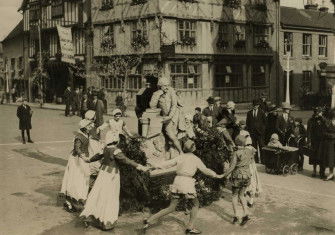The Black Legend of the House of Dudley
Three generations of the cursed House of Dudley stained the executioner’s block in 16th-century England. Were its members murderous villains working to overthrow the Tudor crown, or shrewd political agents struggling to survive?
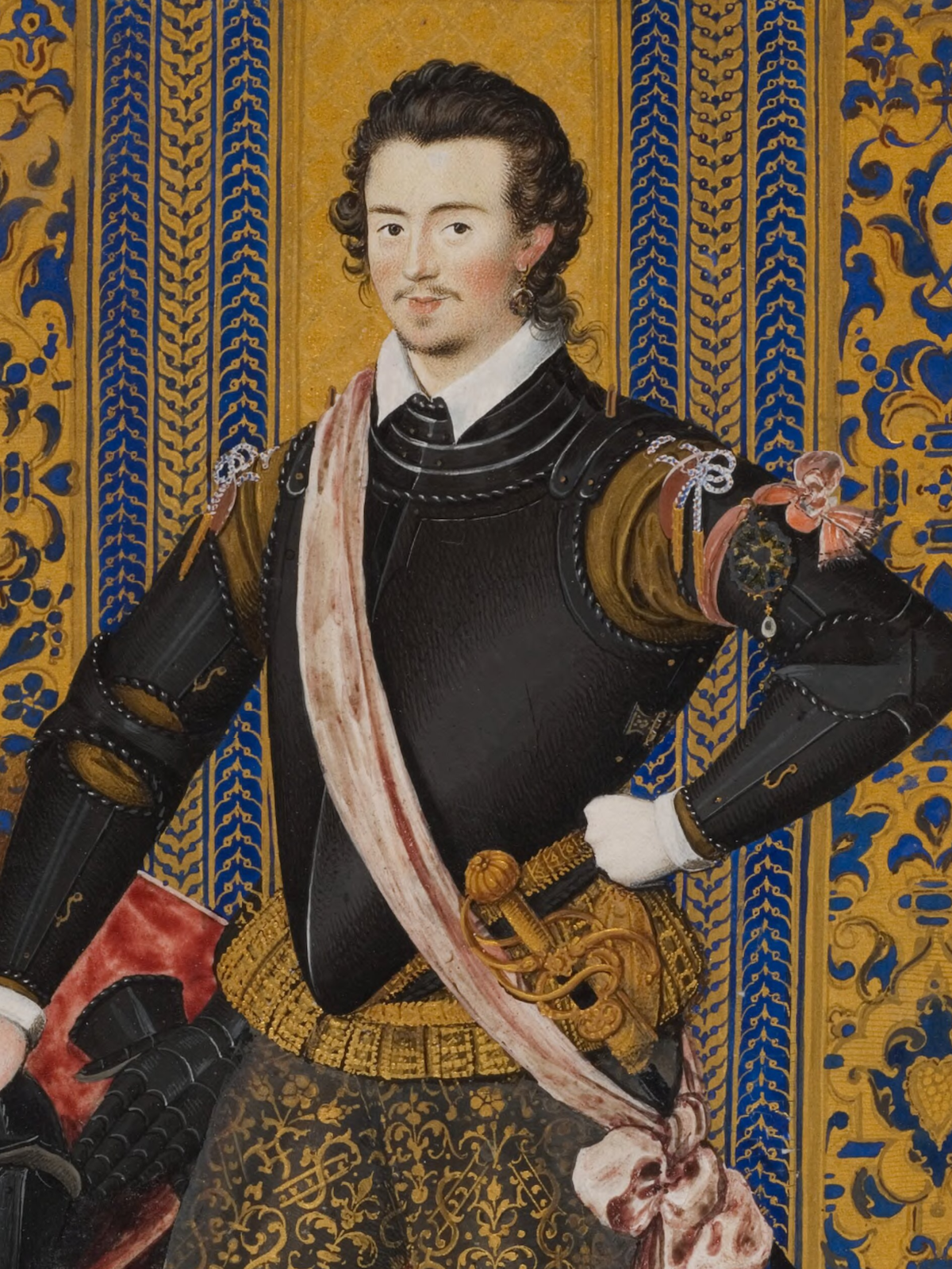
As Elizabeth I reached her 50th year, and religious and political tensions in England their bloody peak, a short manuscript circulated the court. Telling of the murderous misdeeds and scandalous ambitions of the queen’s favourite, Robert Dudley, Earl of Leicester, it became known as Leicester’s Commonwealth. It was not just he, however, who was the target of the anonymous author’s vitriol, but his entire family. Robert, the polemic railed, was ‘so born, so bred up, so nuzzled in treason from his infancy, descended of a tribe of traitors, and fleshed in conspiracy’. He was the son of a treacherous house and it had been foretold that ‘the house of Sir John Dudley’, Leicester’s father, was ‘to be the ruin in time of his Majesty [Henry VIII’s] royal house and blood’.
This was not the first time that court and country had been abuzz with the cursed name of Dudley and it would not be the last. What has come to be known as the ‘Black Legend’ grew throughout the 16th century, associating the House of Dudley with villainy, ambition and greed. Three generations of the House of Dudley had risen high in the Tudor court only to find themselves on the executioner’s block. Robert’s grandfather, Edmund Dudley, had been one of the first victims of Henry VIII in 1510. His son, John Dudley, had been executed by Mary I in 1553 and Robert’s brother, Guildford Dudley, had found himself in the same position on the scaffold a year later. The House of Dudley, as Leicester’s Commonwealth put it, was ‘stained with the block’. But did this make it ‘an evil race’, determined to overthrow the House of Tudor?
In the five centuries since the birth of the Black Legend, historians have both cultivated the tale and sought to dispel it. When history gets told as a story of goodies and baddies the Dudleys almost always fall into the latter camp. Much has been done in the last few decades to add nuance to the account, but the Black Legend persists. Is this, perhaps, because there is some truth to it?
Edmund Dudley, the ‘ravening wolf’ of Henry VII
In the first months of Henry VIII’s reign, London found its villain in Edmund Dudley. A lawyer descended from a minor noble family, Edmund had made himself useful to the previous king, Henry VII, by stuffing his coffers with ill-gotten gains, wrenched from the pockets of his subjects. As the contemporary history known as Fabyan’s Chronicle put it, ‘to speak of his cruelty executed toward the City of London by him and his, it would ask a long tract of time to rehearse’.
Edmund did not have the extensive career of his son or grandson, but it was dramatic in its impact. By 1504 he had caught the attention of Henry VII, perhaps for his deep knowledge of the king’s legal prerogatives, when he was made Speaker of the House of Commons. He began his account book the same year, collecting money for the king. When he filled out the final line of that record four years later, he had raised almost £220,000 for the Crown, about £150 million in today’s money. His account book tells a tale of lives and livelihoods ruined in the pursuit of coin. These stories are corroborated by other accounts, for instance the testimony of poor Thomas Sunnyff, who was hounded for years for £500 that Dudley had promised to the king, finding himself accused of the murder of a child and imprisoned in the Fleet and King’s Bench Prisons, held in the home of one of Dudley’s informers and finally taken captive in the Tower of London.

These reports show Edmund Dudley to be firm in his convictions and adamant about his service to the king. He bristles particularly at any who question his execution of the king’s will. At Sunnyff’s suggestion that ‘It was not the king’s will that I should yield myself guilty of the thing that I was never guilty of’, Edmund had him immediately confined to the Tower. When Sir Robert Drury, a fellow lawyer and Henry VII’s councillor, dared to suggest that the king had no right to interfere in a particular legal matter from which Dudley was attempting to profit, Dudley spat back ‘Are you of the king’s council, and will argue against the king’s advantage?’, threatening Henry’s displeasure. Inventories of his possessions show a man of learning but also ambition: black robes with hints of crimson, silver and gold, and doublets of purple, velvet and tinselled satin, which in the first months of the reign of Henry VIII would become legally restricted to those of much higher standing than Edmund Dudley, a lowly esquire.
Edmund’s pride gave way to panicked remorse when he fell. The king’s death left him exposed to his many enemies, who wasted no time in imprisoning him in the Tower to await execution for treason. While captive, Edmund received petitions written by those from whom he had extracted money, emboldened by the new regime. From the Justice of the Peace who wanted his £20 returned, to Sunnyff himself, detained in that same Tower, Edmund was faced with the realities of his execution of the late king’s will. Edmund maintained, with some of his characteristic conceit, that service to Henry VII had driven him, never mind the benefits he accrued along the way. To the Justice of the Peace Edmund wrote that, though he did take this £20 and ‘paid it to the king’s grace’, he felt that ‘in my conscience you ought to have it again’ and maintained, ‘I could have made your fine no less’. To Sunnyff, too, Edmund blamed the king for the ‘great wrong’ which had been done to him.
Regardless of where the culpability lay for Edmund’s merciless hounding, he certainly was not guilty of the treason for which he was executed. Edmund was accused of ‘falsely, feloniously, and traitorously conspiring, imagining and compassing how and in what manner he, with a great force of men and armed power, might hold, guide, and govern the King and his Council against the wishes of the King’, even planning to ‘completely destroy the King, and to depose, remove, and deprive him of his Royal authority’. This was an entirely trumped-up accusation, borne of a desire to remove and scapegoat Edmund and his equally unpopular colleague, Sir Richard Empson. Edmund Dudley might have been ruthless, prideful and ambitious, but it was also true that he had been so in the service of Henry VII. To have been executed, then, for a betrayal of the Crown was a final indignity and stained his family for generations with treason he did not commit.
John Dudley, the ‘ragged bear most rank’
Edmund’s eldest son, John, was only six years old when his father was executed in 1510. His mother’s subsequent marriage to Henry VIII’s bastard uncle, Arthur Plantagenet, helped pave the way to his restoration, as did John’s association with many of Henry VIII’s queens. By the end of the reign of Henry VIII, John was Viscount Lisle, Lord Admiral and a very close friend of Edward Seymour, uncle to the young heir, Prince Edward. As the king took to what would become his deathbed, there were already concerns about John’s power and purpose. The imperial ambassador wrote that the king in his illness ‘passes the time playing at cards with the Admiral [John Dudley] and other intimates’. On the accession of Edward VI, John Dudley became Earl of Warwick and Lord Chamberlain and it was recognised widely that he was second only to Seymour, now Duke of Somerset and Lord Protector. From the start, however, there were expectations that their friendship would not withstand the trials of power. Just weeks into the young king’s reign the same ambassador wrote that it was ‘quite likely that some jealousy or rivalry may arise’ between the two, because of their ‘widely different characters’. Seymour he described as ‘a dry, sour, opinionated man’, in contrast to Dudley, who was ‘of high courage’ and would ‘not willingly submit to his colleague’. He was also, at this time, ‘in higher favour both with the people and with the nobles’. This was not to last.
The real emergence of the Black Legend lies in John Dudley’s decision to execute his friend Thomas Seymour, Edward’s brother, in 1552 and the succession crisis that followed in 1553. According to this account, John had long awaited an opportunity to dispense with Thomas Seymour and seize power for himself and, in a complicated plot that stretched over years, John rose from a humble viscount to Duke of Northumberland and father-in-law of the queen. This trajectory is correct, but the evidence does not support the level of scheming the legend implies. Moreover, John Dudley forgave Seymour after his initial arrest for treason in 1549 and reinstated him in the Council, sticking his neck out to save his former friend. According to one account, John stormed in on the Council meeting which would decide Seymour’s fate, lay his hand on his sword and proclaimed, ‘you seek his blood and he that seeketh his blood would have mine also’. The matter was hastily dropped.
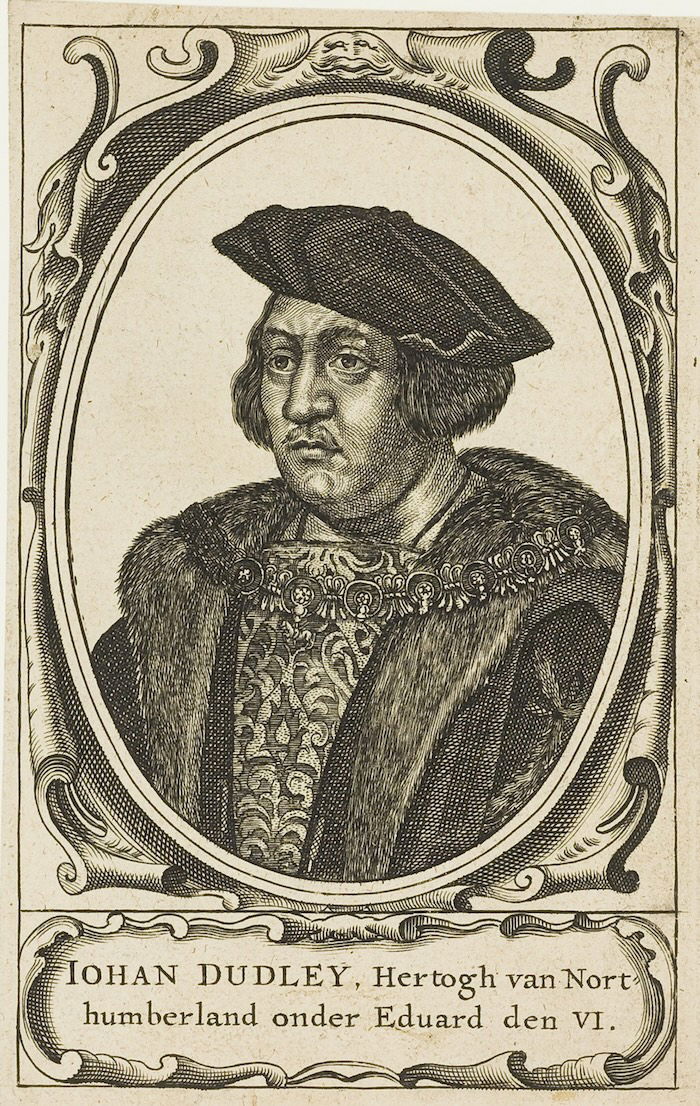
In John’s view, Seymour did not help his own case following his restoration. On realising that Seymour was reaching for the heights of power once again, John wrote despairingly to a colleague: ‘Alas, what meaneth my Lord in this way to discredit himself, and why will he not see his own decay herein?’ At Seymour’s trial, he was falsely accused of many things but, by his own admission, he had considered having John Dudley killed. Forgiveness would not be an option a second time.
Seymour’s execution ended John’s popularity. With Edward VI dying, he found himself in a position not unlike that of his father, four decades before: vulnerable without the protection of the king he served. What’s more, the heir to the throne was the Catholic Mary, who had already decided that John was the ‘most unstable man in England’.
In this context, the decision made by John Dudley, in May 1553, to marry his son, Guildford Dudley, to Lady Jane Grey can be read a number of different ways. According to the Black Legend, John already had in mind to force Edward VI to circumvent the succession, skipping his half-sisters Mary and Elizabeth to place the crown on the head of his cousin, Jane Grey, a great-granddaughter of Henry VII. The tyrannical Duke of Northumberland can be imagined leaning over the deathbed of the sickly young king, perhaps even forcing his hand as he makes the adjustments to the succession to ensure that a Dudley sits on the throne of England.
It remains possible, however, that John was simply trying to make connections with the realm’s most powerful houses, perhaps to protect himself and his family. Jane’s father was the only other duke in England, the Duke of Suffolk, a potentially powerful ally. In the same wedding ceremony, John also married his daughter, Katherine, to Henry Hastings, the son of the Earl of Huntingdon, who too had a claim to the throne through the Plantagenet line. John had further plans to marry his brother, Andrew, to Margaret Clifford, another descendent of Henry VII.
Edward VI’s change to the succession, in this more sympathetic version of events, is motivated both by religious conviction – the Protestant Jane over the Catholic Mary – and contemporary misogyny. It is clear that Edward’s priority was to find an ‘heir male’ to the throne of England. Mary and Elizabeth were unmarried. The recently wed Jane might already be carrying a son who could rule England and, in the meantime, Edward could be assured that she, her husband and her father-in-law would continue to govern the realm according to his wishes.
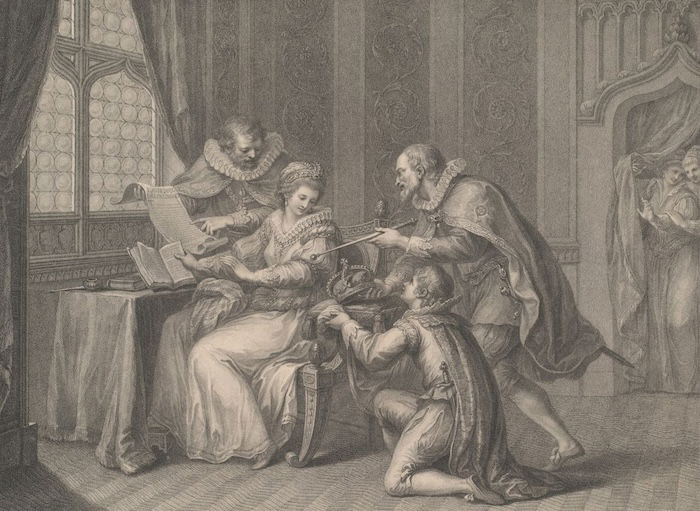
Of course, this Dudley-led reign did not last very long; enemies and allies alike underestimated the power and popularity of Mary Tudor and a Dudley was once again sacrificed to establish a Tudor reign. Unlike his father, however, John Dudley was guilty of precisely what he was accused. He had certainly raised arms against Mary I, though he did so at the command of his former king and current queen, and with the full support of the Council, who now sat in judgment against him. He was the only one of them to go to the block for supporting the reign of Queen Jane.
One more element of this Dudley’s Black Legend requires consideration, however, and that is his religious flexibility. He had long been accused of religious insincerity, despite implementing the Protestant Reformation of Edward VI without hesitation. The day of his execution, however, he seemed to confirm this instrumentalism, by publicly proclaiming the superiority of the Catholic faith and condemning Protestantism. Did he do this to pave his way to Heaven, or to ensure his children’s survival, perhaps at the cost of his soul? Regardless, John Dudley went to the block in 1553 reviled by Protestant and Catholic alike, uniting the country in hatred of that great villain, the Duke of Northumberland.
Jane Dudley, the ‘venomous’ duchess
Most of history’s condemnation is saved for the male members of the Dudley family; the women are either portrayed as victims or barely mentioned. The exception is John’s wife, Jane, Duchess of Northumberland, largely because she becomes an accomplice in the victimhood of her daughter-in-law, Lady Jane Grey. According to Grey’s account, the elder Jane reneged on her promise to allow Grey to be with her mother and punished her by keeping her husband, Guildford, from her. When Grey informed her mother-in-law that she would not make Guildford king, she ‘got very angry with me and induced her son not to sleep any more with me and he did it’. Leaving aside, for the moment, the question of authorship of this account, it is clearly written to make Grey appear in the best possible light: a victim of the machinations of others, particularly the Dudley family. The Duchess of Northumberland, then, becomes an overbearing and manipulative mother-in-law, who ‘envenomed’ (possibly poisoned) and ‘ill treated’ the young Lady Jane.
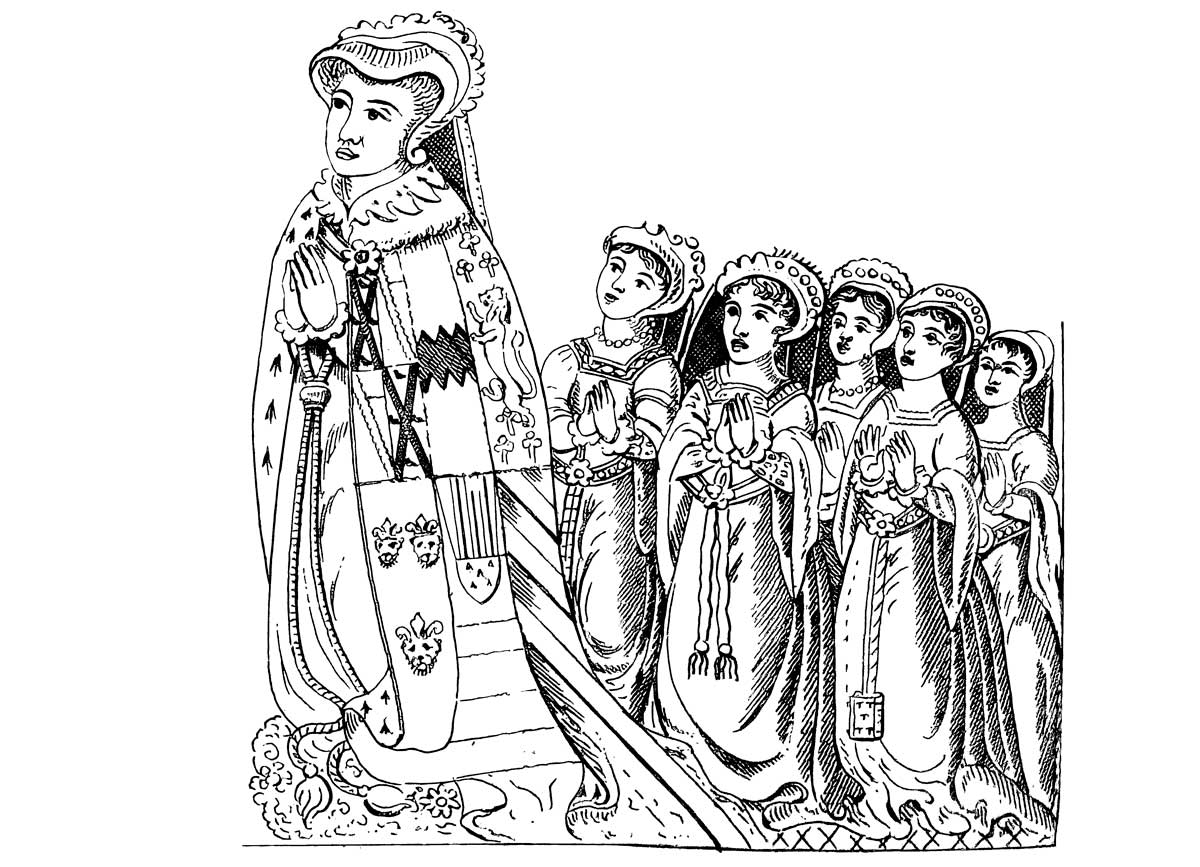
What we do know is that Jane Dudley, Duchess of Northumberland, was certainly committed to ensuring the wellbeing and survival of her family. After being released from the Tower, where she had been briefly detained for her part in the succession crisis, Jane rushed to meet the new queen, Mary, to beg for her family’s lives. She was refused admittance. Jane then set to work, desperate with worry, taking advantage of the networks of women of which she was a part, to beg for her ‘poor five sons’ imprisoned in the Tower and ‘for their father who was to me and to my mind the most best gentleman that ever living woman was matched withal’.
After the execution of her husband, Jane returned to court, where she, her daughters and her daughters-in-law made connections to free the imprisoned Dudley sons. This is witnessed by her final will, in which she names courtiers who have made promises to look after her children. It was Jane’s death in 1555 that precipitated the release and restoration of her remaining sons. The monument over her tomb at Chelsea Old Church in London, half of which is still visible today, shows her as the proud and powerful mother of 13 children. At her death, five were still alive, thanks in large part to her efforts.
Robert Dudley, the ‘bear-whelp’ of the House of Dudley
Robert Dudley was the fifth of eight sons born to Jane and John Dudley, but by the reign of Elizabeth I only he and his brother Ambrose remained. Rumours infuse almost everything to do with Robert Dudley and it is nearly impossible to sort truth from falsehood. This is, to a great extent, Robert’s own doing. He was, as the author of Leicester’s Commonwealth put it, ‘the caster of these shadows’. Certainly, he was in Elizabeth’s trust and affections, regardless of whether he made it into her bedchamber. There is little question that he would have married the queen, had she agreed to it, but even if she had stooped to wed her own subject and the son of a line of traitors, marrying a man thought to have murdered his first wife was a step too far.
That is the first of the accusations that make up the Black Legend of Robert Dudley. He married his first wife, Amy (née Robsart) when they were young, in 1550, prompting another of Elizabeth’s leading councillors to comment that ‘Carnal marriages begin in joy and end in weeping’. Their contact after the accession of Elizabeth I, in 1558, however, was infrequent. This, coinciding with Robert’s apparent courting of the queen, led observers to suggest that he might ‘do away with her’. Not long after these suggestions were made, Amy was indeed found dead in mysterious circumstances: at the bottom of a flight of stairs, having sent her servants away for the day. Her death was determined to have been an accident, but this did not stop many from assuming Robert was responsible, so keen was he to marry the queen. The author of Leicester’s Commonwealth took Amy’s death as evidence that ‘when he desireth any woman’s favour then what power soever standeth in his way hath the luck to die quickly for the finishing of his desire’. To Amy’s demise is added the death of the Baron Sheffield, whose widow Robert had an affair with, and the Earl of Essex, whose widow Robert went on to marry. Wholly ruled by lust, ‘there are not (by report) two noblewomen about her Majesty whom he hath not solicited by potent ways’. For this endeavour he uses an ‘Italian ointment … whereby (as they say) he is able to move his flesh at all times for keeping his credit’, a pint of which he reportedly kept by his bedside.
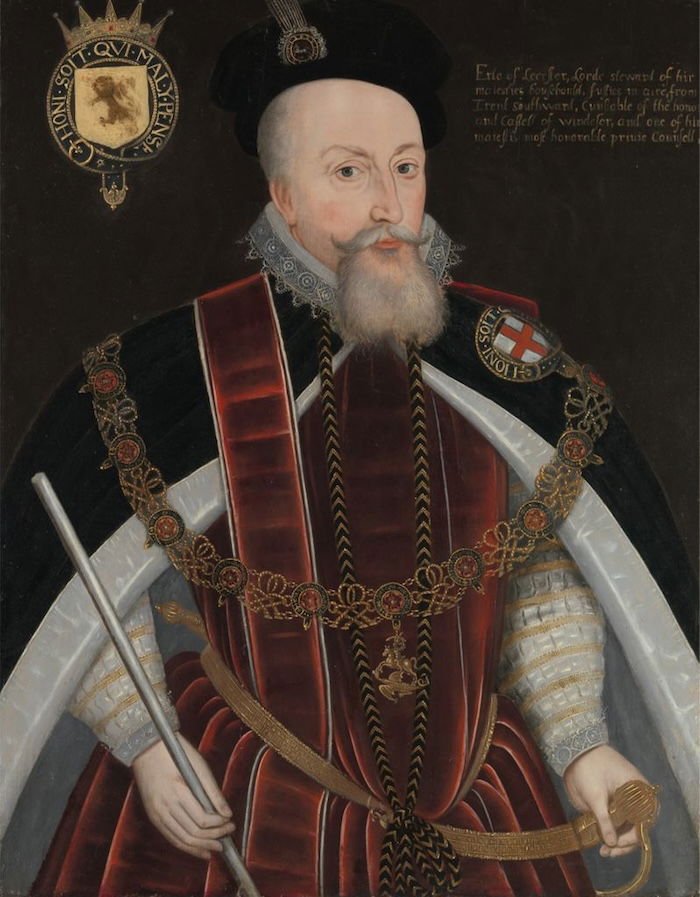
Robert was undoubtedly a notorious flirt. He courted the queen, married twice and had a bastard son with a widow. His ambition, it must be said, was not served by the death of his first wife, so in the unlikely event he had anything to do with it, it was a serious miscalculation. His affair with the baroness was overshadowed by his desire to remain in good standing with the queen. In response to her repeated requests that he marry her, he said there is ‘nothing in this world next to [the queen’s] favour I would not give to be in hope of leaving some children behind, being now the last of our house’. By the time he married again he had reprioritised; his choice of wife, Elizabeth’s cousin Lettice, resulted in his banishment from court.
The tragedy is that Robert’s decision to risk his standing with the queen for the continuance of his house did not pay off. Robert and Lettice had a son who died at the age of only three. Leicester’s Commonwealth suggests that the boy had ‘such a strange calamity of the falling sickness’, which is ‘a witness of the parents’ sin and wickedness’, not knowing that by the time it was circulating the court, the ‘noble imp’, as his parents called him, had died. Robert Dudley died in 1588, an earl and favourite of Elizabeth I, but no more and with no children to carry on the Dudley name.
As we might expect, the Black Legend does not stand up to historical scrutiny – but that does not mean the exoneration of the members of the House of Dudley. They were indeed ambitious, sometimes greedy and eager to seize power. There is, of course, much more to say on the Dudley family, but it is apparent that this scramble for power and position was motivated as much by a desire for security as it was the ambitiousness often attributed to them. In seeking to overcome death, they frequently ended up on the executioner’s block, but they did make their mark on history.
Joanne Paul is a senior lecturer at the University of Sussex and author of The House of Dudley (Michael Joseph, 2022).



